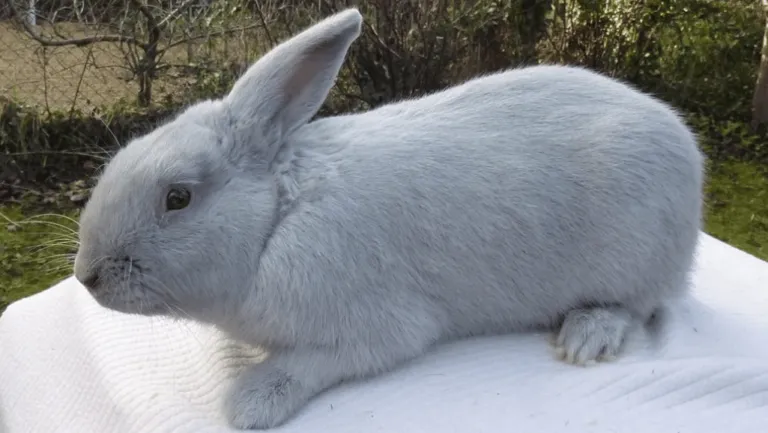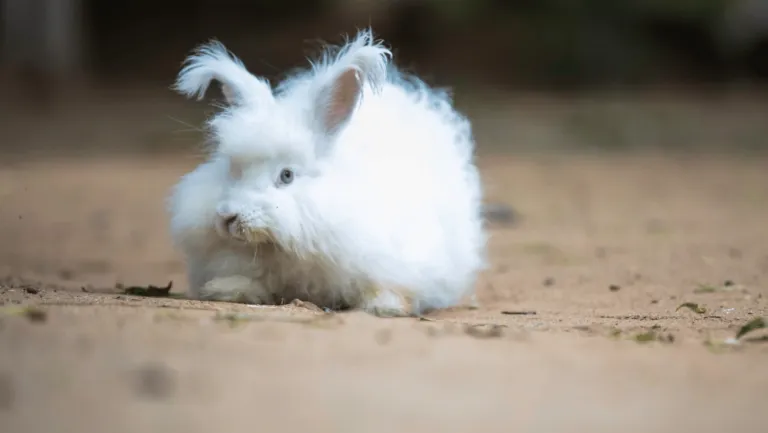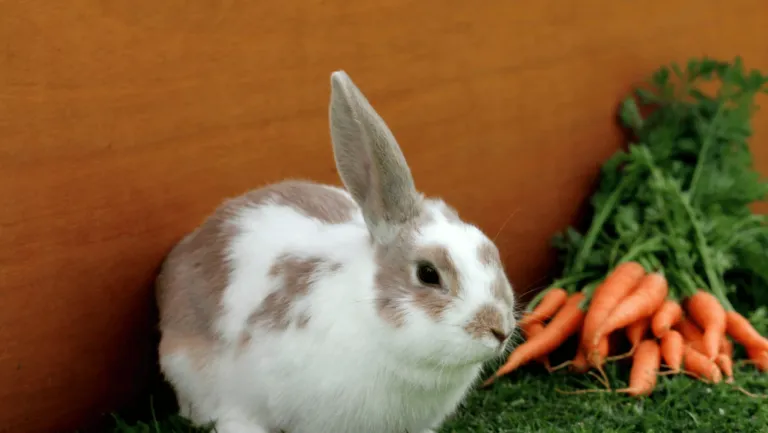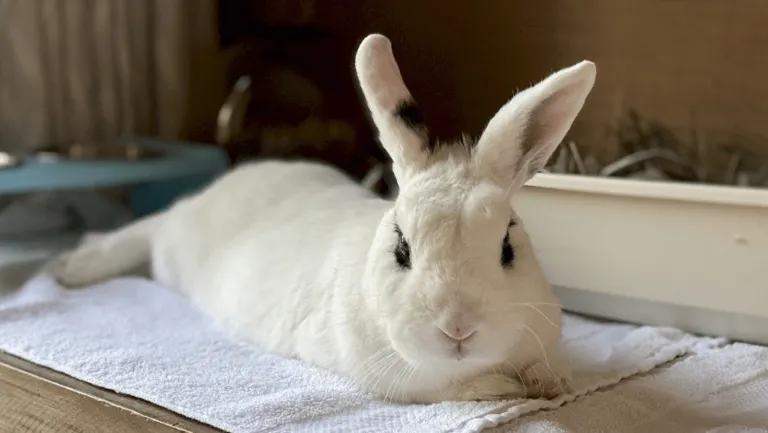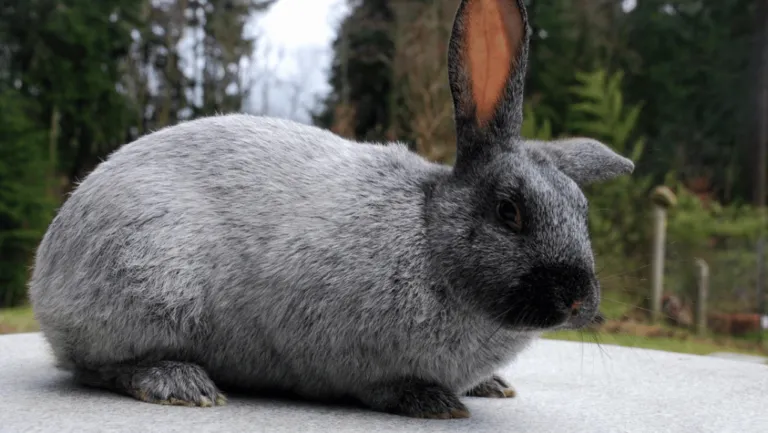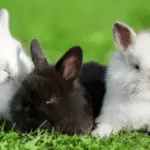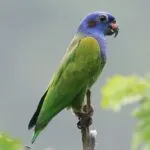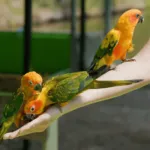Welcome to our guide on the Belgian Hare Rabbit, one of the most unique and captivating rabbit breeds. With its slender and wiry frame, long powerful legs, and dynamic appearance, the Belgian Hare truly stands out in the rabbit world. Although it may look like a hare, it is, in fact, a breed of domestic rabbit selectively bred to resemble its wild cousin.
Throughout this article, we will delve into the history, characteristics, care, and popularity of the Belgian Hare Rabbit. Whether you are a passionate breeder, an enthusiast, or simply curious about this beautiful breed, join us as we explore the fascinating world of Belgian Hare Rabbits.
Key Takeaways:
- The Belgian Hare is a breed of domestic rabbit that closely resembles a wild hare.
- It has a slender frame, powerful legs, and a distinctive appearance.
- The breed originated in Belgium in the 18th century and gained popularity in England and the United States.
- Belgian Hares require special care, housing, and attention due to their size and energetic nature.
- They have a dedicated community of breeders and enthusiasts supporting their conservation and promotion.
A Brief History of the Belgian Hare
The Belgian Hare breed, one of the popular Belgian Hare Rabbit Breeds, originated in Belgium during the 18th century. It was developed through the deliberate crossbreeding of domestic rabbits and wild European rabbits. This selective breeding aimed to create a breed that closely resembled the appearance of hares but with the characteristics and benefits of domestic rabbits.
In 1874, the Belgian Hare was imported to England, where it quickly gained recognition and popularity among rabbit enthusiasts. By 1877, the breed had made its way to the United States, capturing the attention of rabbit enthusiasts and exhibitors alike. The breed’s striking appearance and unique qualities propelled its rise in popularity.
The Belgian Hare experienced a significant boom in the late 19th century, especially in the United States. Exhibitors and breeders admired its athletic physique, elegant appearance, and show-worthy characteristics. However, the breed’s growth eventually waned due to challenges in turning it into a profitable meat producer. Despite this setback, the Belgian Hare managed to carve out a niche as a beloved show breed.
The American Belgian Hare Club, established in 1972, plays a crucial role in preserving and promoting the breed. Composed of dedicated enthusiasts, the club actively supports the growth and development of the Belgian Hare breed in the United States.
A Timeline of the Belgian Hare
| Year | Event |
|---|---|
| 18th century | Originated in Belgium through crossbreeding |
| 1874 | Imported to England |
| 1877 | Introduced and gained popularity in the United States |
| 1898 | Peak of the Belgian Hare boom |
| 1972 | Formation of the American Belgian Hare Club |
The Belgian Hare breed has left a lasting impression in the world of Domestic Rabbit Varieties and Rabbit Show Breeds. Its captivating appearance, vibrant history, and devoted breeders continue to keep the breed’s legacy alive to this day.
Characteristics and Appearance
The Belgian Hare is known for its distinctively close resemblance to a hare. Its long and fine body, muscular flank, arched back, and well-rounded hindquarters contribute to its dynamic appearance. This breed exhibits a small, long head with big upright ears, adding to its charm and allure.
The coat of the Belgian Hare comes in various color varieties, but the most well-known is the deep red rufous color with black ticking. This coloration adds a striking contrast to its slender physique, further highlighting its unique characteristics.
Rabbit Coat Colors:
The coat colors of Belgian Hares can vary, and here are some common examples:
| Coat Color | Description | |
|---|---|---|
| Deep Red Rufous | The most well-known coat color of the Belgian Hare, displaying a deep red hue with black ticking. | |
| Black | A solid black coat without any additional markings or patterns. | |
| Black and Tan | This coat color combines black and tan markings, creating an interesting contrast. |
Rabbit Breed Standards:
Belgian Hares are bred to meet specific standards to maintain their unique appearance. Here are some breed standards based on the American Belgian Hare Club:
- Body: Long and fine, resembling a hare’s body shape.
- Head: Small and long, with big upright ears.
- Coat: Deep red rufous color with black ticking, or other recognized coat colors.
- Size: Adult weight typically ranges between 6 to 9 pounds.
Lifestyle and Housing
Belgian Hares, being larger in size and high in energy, require special considerations when it comes to their lifestyle and housing. Providing them with sufficient space to move freely is essential for their well-being. Here are some key points to keep in mind:
Housing Requirements
Belgian Hares need a cage or enclosure that offers ample space for their active nature. A minimum floor space of 3 by 2 meters is recommended to ensure they have enough room to hop and stretch their legs. The cage should be well-ventilated and secure to prevent escape.
It’s important to note that Belgian Hares are not suitable for small enclosures or traditional rabbit hutches. They require more room to exercise and explore.
Outdoor Run or Enclosed Area
In addition to their indoor living space, Belgian Hares should have access to an outdoor run or an enclosed area in the house where they can exercise and play. This allows them to burn off their energy and maintain good physical health.
Cleaning and Bedding
To ensure a clean and hygienic living environment, the rabbit home should be cleaned out on a weekly basis. Remove any soiled bedding material and replace it with fresh, clean bedding. Suitable bedding options for Belgian Hares include hay, straw, or shredded paper.
Image of a Belgian Hare
Comparison of Housing Requirements for Belgian Hares and Other Rabbit Breeds
| Rabbit Breed | Minimum Floor Space Requirement | Indoor/Outdoor Space | Bedding Material |
|---|---|---|---|
| Belgian Hares | 3 by 2 meters | Outdoor run or enclosed area | Hay, straw, or shredded paper |
| Other Rabbit Breeds | Varies depending on breed size | Indoor cage or hutch | Wood shavings, paper-based bedding |
As you can see from the table above, Belgian Hares require larger enclosures and more space compared to other rabbit breeds. Their energetic nature and need for exercise make it crucial to provide them with suitable housing.
Behavior and Temperament
Belgian Hares are known for their highly intelligent and energetic nature. They possess a curious and alert personality, which makes them fascinating pets for rabbit enthusiasts. However, their spirited temperament requires careful handling and consideration.
Due to their size and speed, Belgian Hares are not recommended for very young children. They can be easily startled by sudden noises or movements, which may lead to defensive behavior such as kicking out with their powerful hind legs.
While they can form strong bonds with their owners and enjoy social interaction, it is important to provide them with a calm and predictable environment. This ensures their well-being and minimizes stress. Adequate space and mental stimulation are essential for the happiness of Belgian Hares.
Diet and Feeding Requirements
Proper nutrition is essential for the health and well-being of Belgian Hares. Due to their high metabolic rate, they may require more food and consistent feeding compared to other rabbit breeds. A well-balanced diet is key to ensuring their optimal growth and vitality.
Belgian Hares should be provided with a diet that is rich in hay, fresh vegetables, and a limited amount of fruit or carrots. These components offer the necessary vitamins, minerals, and fiber for their overall well-being. However, it’s important to note that fruits and carrots should only be given in moderation due to their high sugar content.
Here is a breakdown of the diet and feeding requirements for Belgian Hares:
- Hay: Provide high-quality hay such as timothy, meadow, or oat hay. It aids in digestion, prevents overgrowth of teeth, and keeps their gut healthy.
- Fresh Vegetables: Include a variety of fresh vegetables in their daily diet. Leafy greens like kale, romaine lettuce, and cilantro are excellent choices. Other vegetables like carrots, broccoli, and bell peppers should be given in small quantities.
- Fruits: Offer fruits occasionally as treats in very limited quantities. Apples, strawberries, and blueberries are some options. Remember to remove any seeds or pits that may be harmful to them.
- Treats: Limit the use of treats as they can disrupt the balance of their diet. Opt for rabbit-safe treats available in pet stores and follow the recommended serving size.
- Water: Fresh water should always be available to Belgian Hares. Ensure their water source is clean and changed daily to promote good hydration.
Providing a balanced diet and maintaining proper feeding habits is crucial for the overall health and well-being of Belgian Hares. However, it’s important to note that individual dietary needs may vary. It’s always best to consult with a veterinarian or a rabbit nutritionist for personalized advice and guidance.
Popularity and Conservation Status
The Belgian Hare has garnered a loyal following among enthusiasts in the UK and the US, solidifying its reputation as a highly regarded “fancy” rabbit breed. With its striking resemblance to a hare and unique physical attributes, it has captured the hearts of rabbit lovers worldwide.
However, despite its popularity, the conservation status of the Belgian Hare is a cause for concern. According to the American Livestock Breeds Conservancy, the breed is currently listed as “threatened.” This classification highlights the need for efforts to preserve and protect these rare rabbit breeds, ensuring their continued existence for future generations.
Conservation Status Comparison
To better understand the conservation status of the Belgian Hare and its significance within the rabbit world, let’s compare it with other giant rabbit breeds:
| Rabbit Breed | Conservation Status |
|---|---|
| Belgian Hare | Threatened |
| Giant Papillon | Watch |
| Flemish Giant | Recovering |
By examining the conservation status, we can observe that the Belgian Hare is facing a higher level of vulnerability compared to the Giant Papillon rabbit breed, which is listed as “Watch.” The Flemish Giant, on the other hand, is in a more stable position with a “Recovering” status.
List of Rare Rabbit Breeds
- Belgian Hare
- Satins
- Beveren
- Palominos
- Egyptian Fayoumis
While the Belgian Hare stands out as a rare rabbit breed, it shares the spotlight with other unique and uncommon breeds. Together, these fascinating rabbit breeds contribute to the diversity and richness of the rabbit world.
Belgian Hare as Pets
Belgian Hares make fascinating pets, but they require special care and attention due to their size and energetic nature. It is important to provide them with the proper housing, exercise, and a balanced diet to ensure their well-being. While they are not recommended for very young children, older children and adults can enjoy their company and unique personalities.
Proper Housing: Belgian Hares need a spacious and secure enclosure to accommodate their active nature. A cage with a minimum floor space of 3 by 2 meters is recommended to allow them to move freely. Additionally, they should have access to an outdoor run or an enclosed area in the house for exercise.
Exercise and Stimulation: Belgian Hares thrive on exercise and mental stimulation. Provide them with toys, tunnels, and obstacles to keep them entertained. Regular playtime and supervised exploration outside their enclosure will also help satisfy their natural curiosity.
Balanced Diet: A well-balanced diet is crucial for the health of Belgian Hares. They should have unlimited access to fresh hay, which aids in digestion and helps wear down their teeth. Leafy greens and vegetables should be included in their daily diet, with fruits and carrots given sparingly to prevent obesity. Ensure fresh water is always available.
Grooming:
Belgian Hares have short coats that are generally low-maintenance. However, during their molting period, they may require occasional grooming to remove loose fur and prevent matting. Regular brushing using a soft-bristled brush or a grooming mitt can help keep their coat in good condition.
In conclusion, Belgian Hares can make rewarding pets for those willing to provide the care and attention they require. With the right environment, exercise, diet, and occasional grooming, these unique and energetic rabbits can bring joy and companionship to their owners.
The Belgian Hare Community
The Belgian Hare breed has garnered a devoted community of breeders and enthusiasts who are passionate about preserving and promoting its unique characteristics. This thriving community is supported by specialty clubs such as the American Belgian Hare Club, which plays a crucial role in maintaining breed standards and fostering collaboration among members.
Belgian Hare Breeders
Breeders in the Belgian Hare community are dedicated to upholding the breed’s distinctive traits and genetic heritage. Through selective breeding and careful genetic management, they strive to produce rabbits that embody the desired qualities of the breed. Genetic considerations such as coat color, size, and physical attributes are meticulously taken into account.
Promotion and Education
Enthusiasts and clubs within the Belgian Hare community actively engage in promoting the breed and educating others about its unique characteristics. This includes participation in rabbit shows, exhibitions, and educational events where breeders and enthusiasts showcase their animals, share information, and raise awareness about the breed’s history, features, and genetic aspects.
Collaboration and Support
The Belgian Hare community fosters an environment of collaboration and support among breeders, helping novice enthusiasts learn from experienced breeders and exchange ideas. The sharing of knowledge and experiences contributes to the overall improvement of the breed and ensures its long-term preservation.
Breeding and Market Potential
When it comes to breeding Belgian Hares, careful selection and possible heavy culling are necessary to maintain the breed’s quality and adherence to breed standards. As a niche breed, the market potential for Belgian Hares can vary.
Some breeders may focus on selling bucks, particularly those with exceptional characteristics and genetic traits. These bucks can be valuable for breeding programs, especially for enthusiasts aiming to improve specific traits in their breeding line.
Additionally, Belgian Hares have the potential to be popular in rabbit show circuits due to their unique appearance and striking resemblance to hares. Show breeders may offer pedigree Belgian Hares as show rabbits, catering to individuals interested in participating in rabbit shows and competitions.
Moreover, there may be a market for Belgian Hares among pet owners looking for an exotic-looking and fascinating breed. With their sleek and dynamic appearance, Belgian Hares are sure to attract attention and stand out among other domestic rabbit varieties.
Breeding and Market Potential Summary
| Market Segment | Potential |
|---|---|
| Breeding Programs | High |
| Show Circuits | Moderate |
| Pet Owners | Moderate |
While the market potential for Belgian Hares might not be as widespread as that of more common rabbit breeds, there is still an opportunity to cater to specific segments of breed enthusiasts, show participants, and pet owners who appreciate the breed’s distinctive qualities.
Other Considerations
When considering breeding or owning Belgian Hares, there are several other factors to take into account in addition to their unique appearance and distinct characteristics. These considerations include the specific care requirements, temperament, and potential market demand for the breed.
Specific Care Requirements
Belgian Hares have particular care needs due to their size and energetic nature. They require ample space for exercise and movement. Providing them with a large enclosure or a spacious indoor area is crucial to their well-being. Additionally, regular grooming and a balanced diet are essential to keep them healthy and maintain their unique coat.
Temperament
Understanding the temperament of Belgian Hares is important when deciding to breed or own them. These rabbits are highly intelligent and energetic, which means they need mental and physical stimulation. They can be easily startled by sudden noises or movements, and they may not be suitable for very young children due to their size and speed. Proper handling and socialization from a young age are crucial for fostering a well-behaved and friendly rabbit.
Potential Market Demand
Considering the potential market demand for Belgian Hares is essential for breeders or individuals looking to sell or acquire these rabbits. While they may not be as popular as some other breeds, their unique appearance and resemblance to hares can attract a specific niche market. Show breeders and pet owners willing to pay a premium for an exotic-looking breed may be potential buyers.
It is crucial to carefully evaluate these factors and make an informed decision when it comes to breeding or owning Belgian Hares. Considering their specific care requirements, temperament, and potential market demand will contribute to a successful and fulfilling experience with this unique breed.
| Considerations | Details |
|---|---|
| Specific Care Requirements | – Large enclosure or spacious indoor area – Regular grooming and balanced diet – Exercise and mental stimulation |
| Temperament | – Highly intelligent and energetic – Easily startled by sudden noises or movements – Not recommended for very young children – Proper handling and socialization |
| Potential Market Demand | – Niche market due to unique appearance – Attraction for show breeders and exotic pet owners |
Conclusion
In conclusion, the Belgian Hare is a remarkable breed of domestic rabbit. Its striking resemblance to a hare, slender physique, and powerful legs make it a favorite among enthusiasts and breeders. However, owning a Belgian Hare requires specific care, housing, and attention due to its unique needs and energetic nature.
As a niche breed within the rabbit world, the Belgian Hare offers a distinctive option for those looking for a dynamic and spirited pet. Its dynamic appearance and spirited personality set it apart from other domestic rabbit varieties. Although it may not be the most suitable choice for everyone, individuals who are passionate about Belgian Hare Rabbit breeds and are willing to provide the necessary care and attention will find great joy and fulfillment in owning one.
Whether you are an experienced breeder or a new enthusiast, the Belgian Hare presents opportunities for selective breeding and potential market prospects. With its unique appeal and demand from pet owners looking for exotic-looking rabbits, the Belgian Hare breed offers a chance to cater to a specific niche market.
Frequently Asked Questions
What is the Belgian Hare?
The Belgian Hare is a breed of domestic rabbit that resembles the wild European hare. It has a slender frame, long and powerful legs, and a dynamic appearance.
How did the Belgian Hare breed originate?
The Belgian Hare breed originated in Belgium in the 18th century through the crossbreeding of domestic rabbits with wild European rabbits.
What is the appearance of a Belgian Hare?
Belgian Hares have a long and fine body, muscular flank, arched back, and well-rounded hindquarters. They have a small, long head with big upright ears, and their coat comes in different color varieties, with the most well-known being the deep red rufous color with black ticking.
What kind of housing and care do Belgian Hares need?
Belgian Hares may require larger enclosures and more attention compared to other rabbit breeds. They need a space to move freely and should have a cage with at least a 3 by 2 meters floor space. They should also be provided with an outdoor run or an enclosed area for exercise. The rabbit home should be cleaned out weekly, and suitable bedding material should be provided.
What are the behavior and temperament of Belgian Hares?
Belgian Hares are highly intelligent and energetic. They can be easily startled by sudden noises or movements and may kick out if handled incorrectly. They are not recommended for very young children due to their large size and speed.
What should I feed my Belgian Hare?
Belgian Hares have a high metabolic rate and may require more food compared to other rabbit breeds. They need a diet rich in hay, fresh vegetables, and a limited amount of fruit or carrots. Treats should be given in very limited quantities, and fresh water should always be available.
What is the popularity and conservation status of the Belgian Hare?
The Belgian Hare remains a “fancy” rabbit breed with devoted followers in the UK and the US. However, its conservation status is currently listed as “threatened” by the American Livestock Breeds Conservancy.
Can Belgian Hares be kept as pets?
Belgian Hares require special care and attention as pets due to their size and energetic nature. They are not recommended for very young children. Proper housing, exercise, and a balanced diet are essential for their well-being.
Are there any communities or clubs dedicated to Belgian Hares?
Yes, there is a dedicated community of breeders and enthusiasts for Belgian Hares, with specialty clubs such as the American Belgian Hare Club supporting the breed.
What should I consider if I want to breed Belgian Hares?
Breeding Belgian Hares requires careful selection and possibly heavy culling to maintain breed quality. The market for Belgian Hares can vary, with some breeders focusing on selling bucks or offering them as show rabbits.
Are there any other considerations before deciding to own or breed Belgian Hares?
It is important to consider the specific care requirements, temperament, and potential market demand before deciding to breed or own Belgian Hares.






